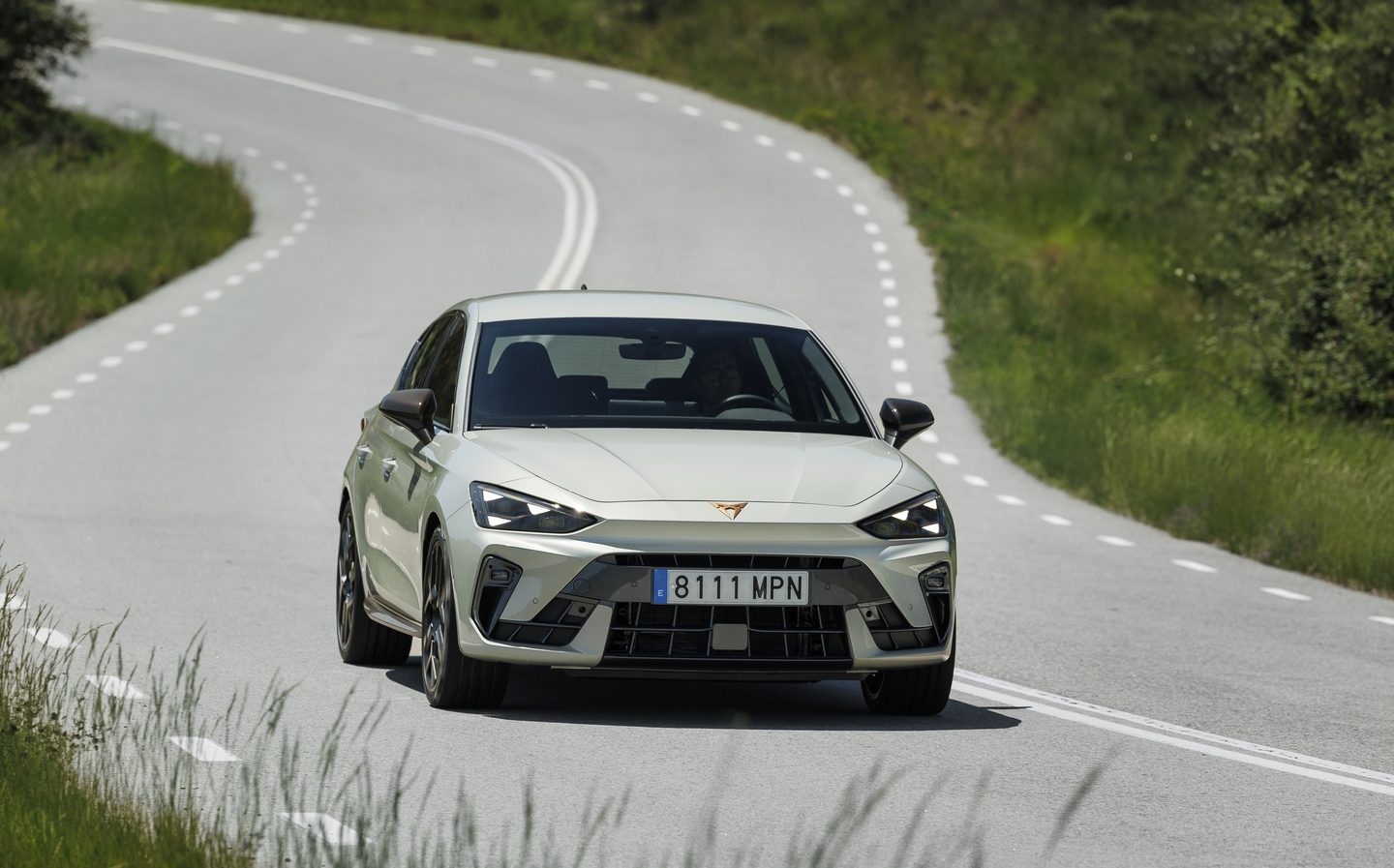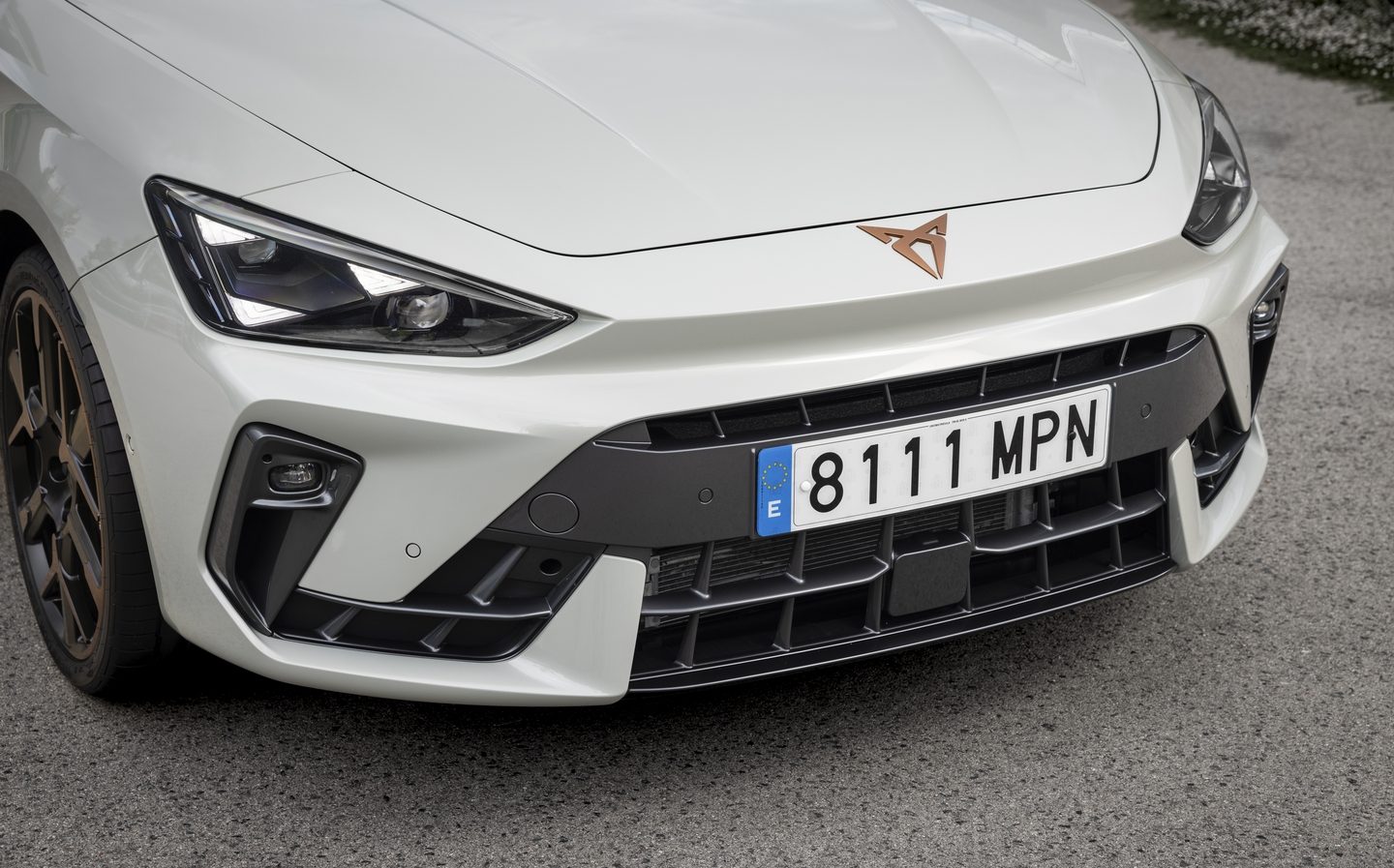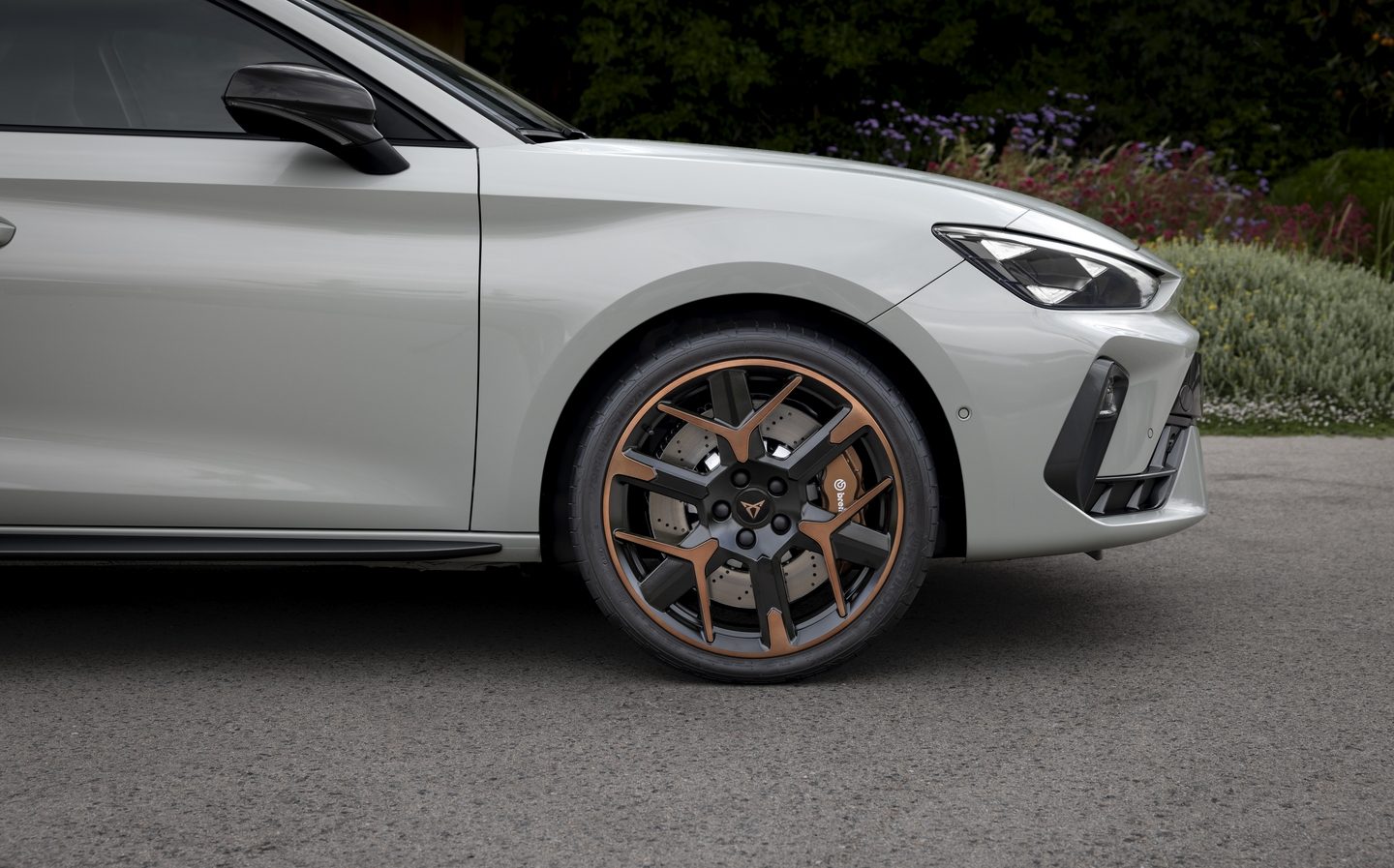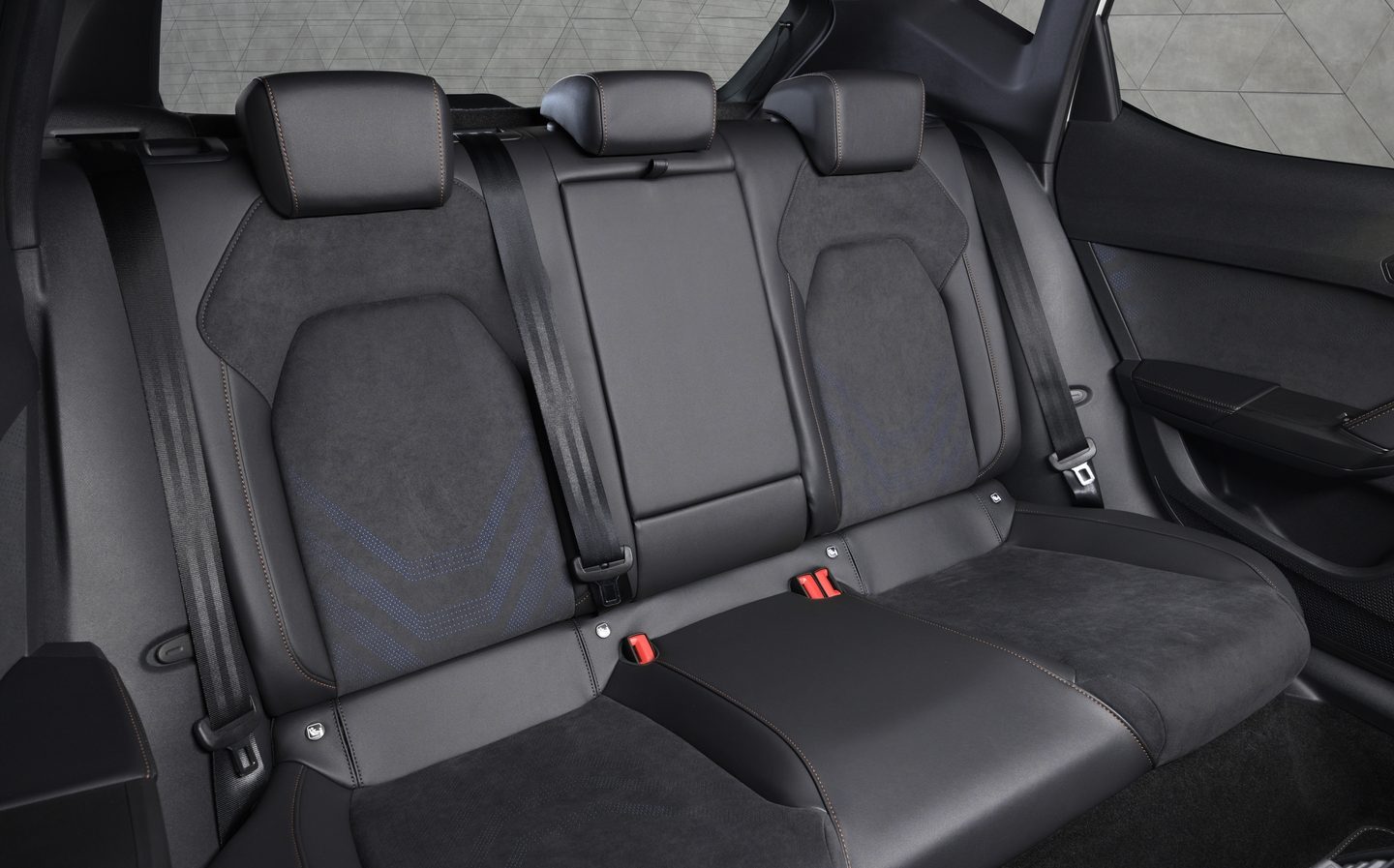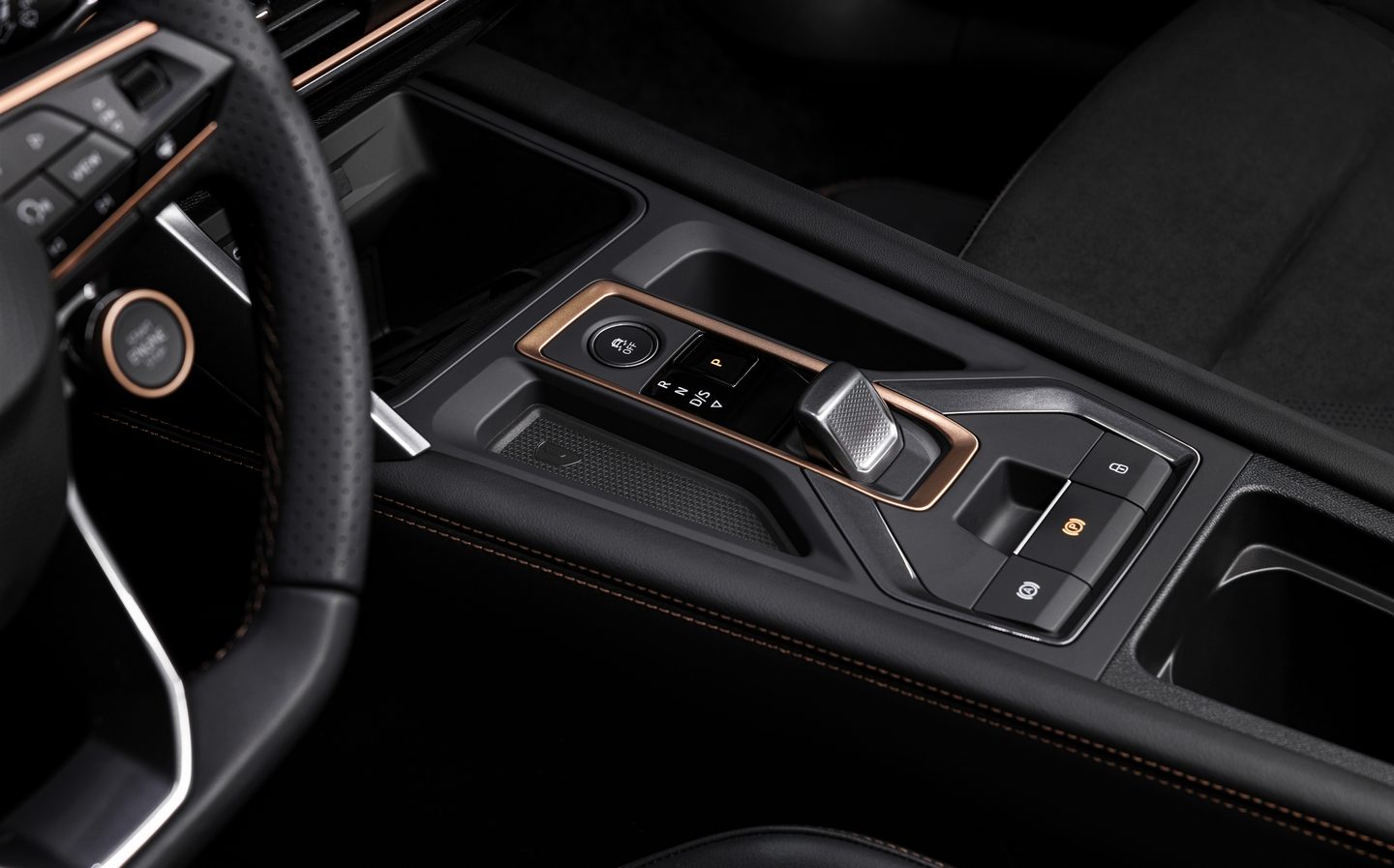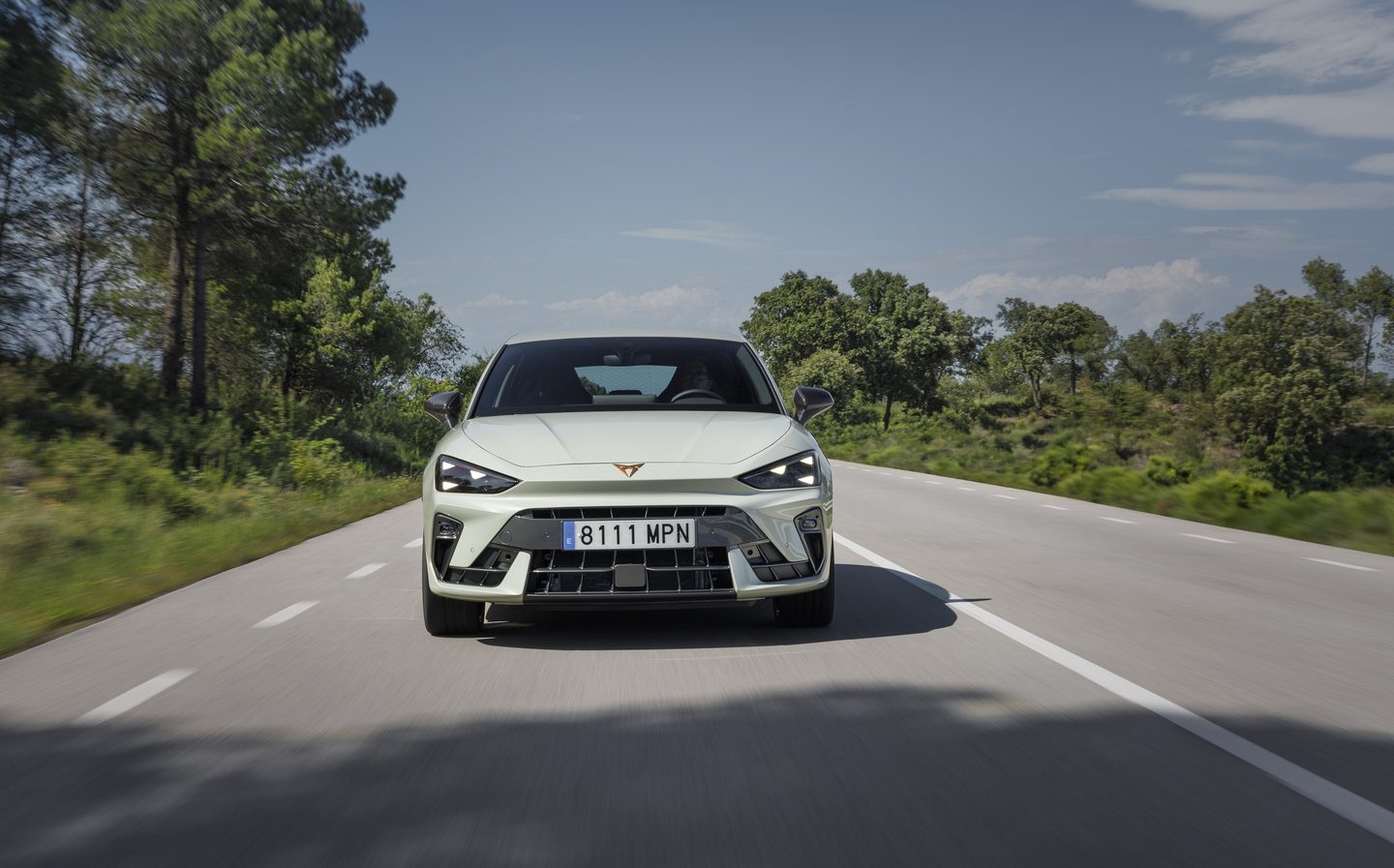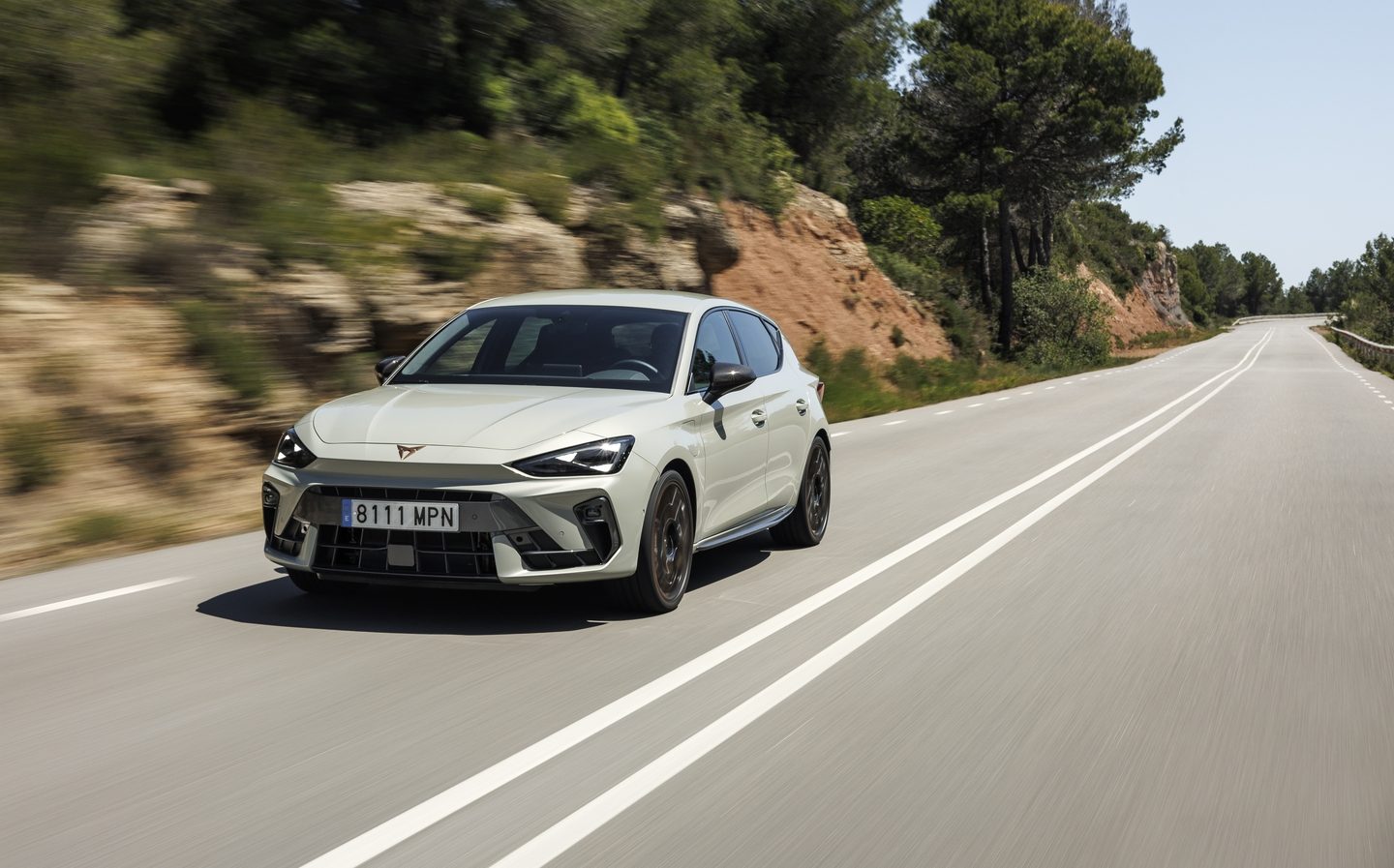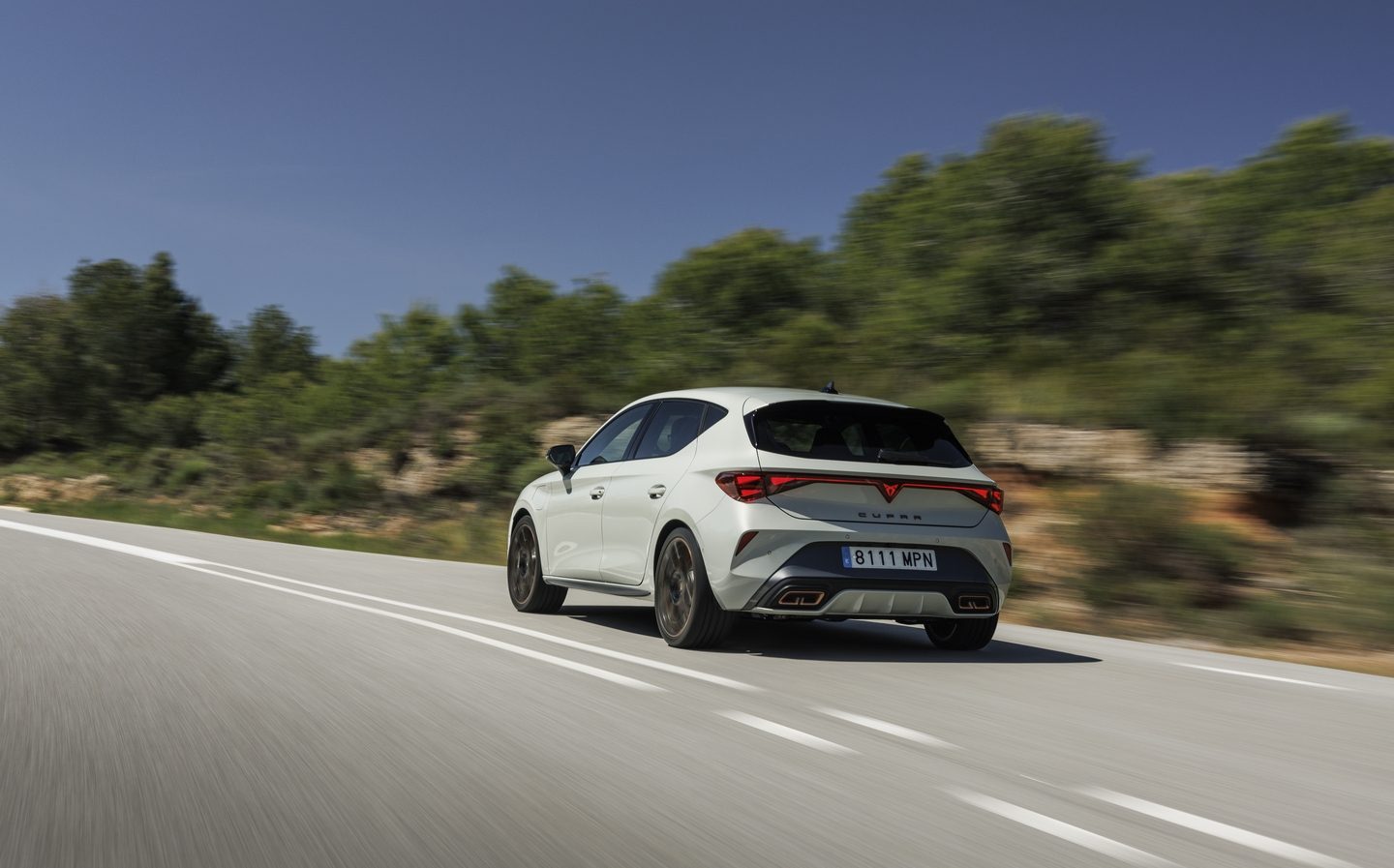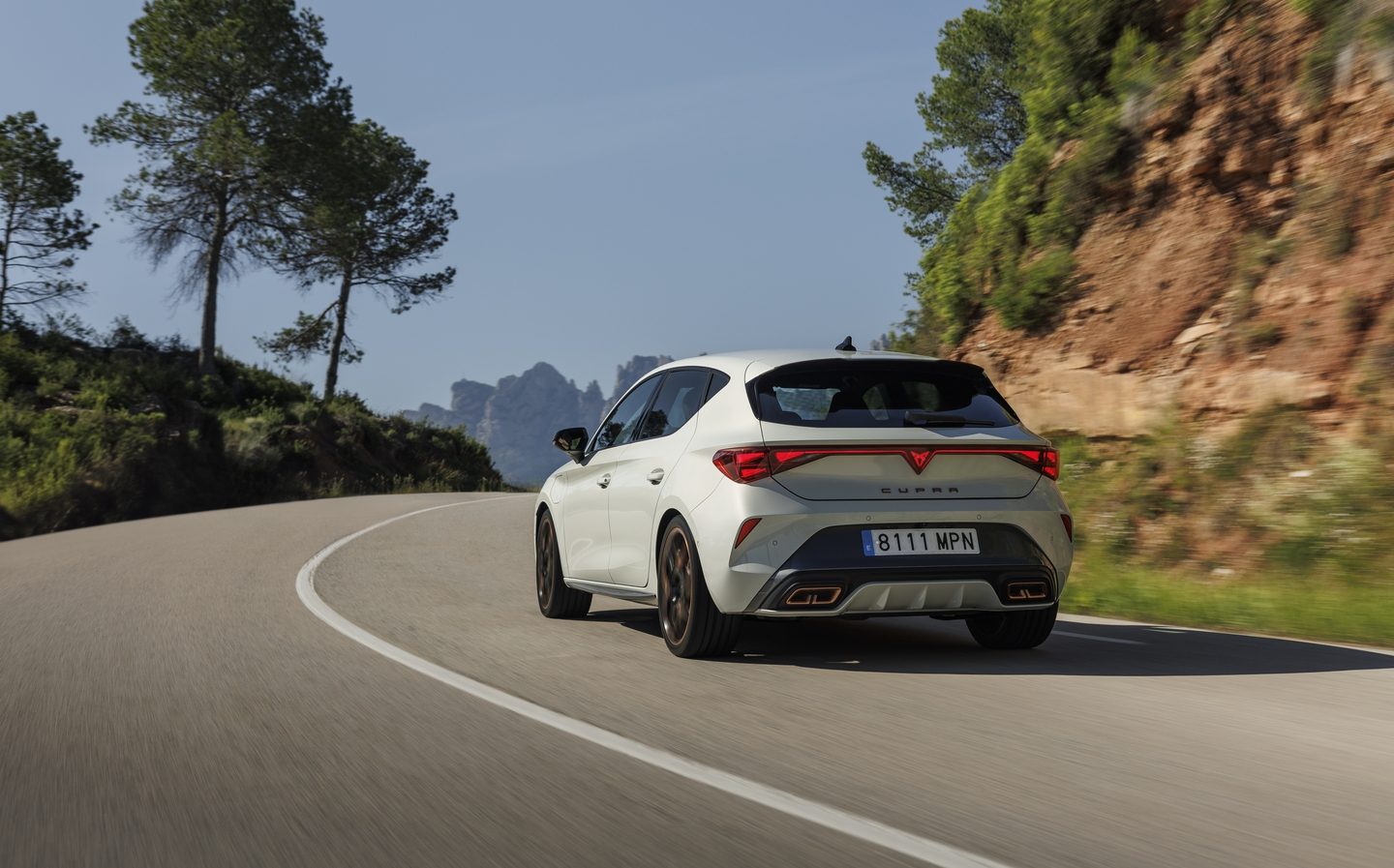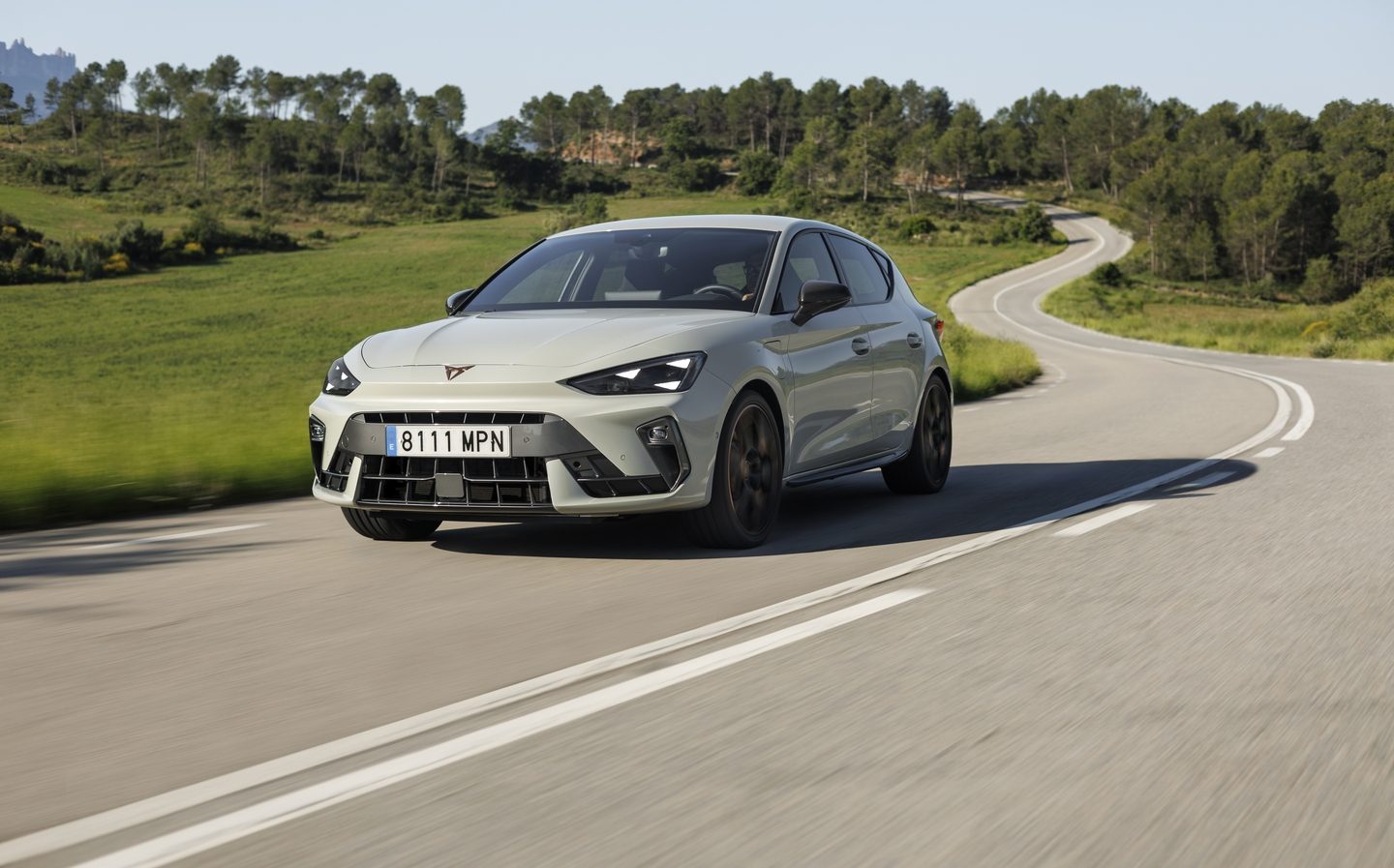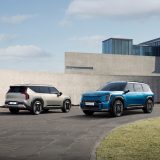Cupra Leon 272 eHybrid 2024 review: Bigger battery, better tech ... but is it a Cupra?
The electric range of the PHEV has doubled
Last year, one of the head honchos at Volkswagen said Seat would stop making cars in the near future, so understandably there’s been some confusion as to what’s precisely going on within the Iberian arm of the car-making conglomerate.
The executive in question — Thomas Schäfer — subsequently went back on his statement and said that double-digit growth in orders of Seat cars means the company will, at least, update the ageing Arona, Ateca and Ibiza lines soon, as well as turning its attention to the long-serving but not quite so old Leon.
However, despite all these reassuring noises, it’s clear that the main product offensive continues not with Seat, but instead with its 2018-born spin-off, Cupra.
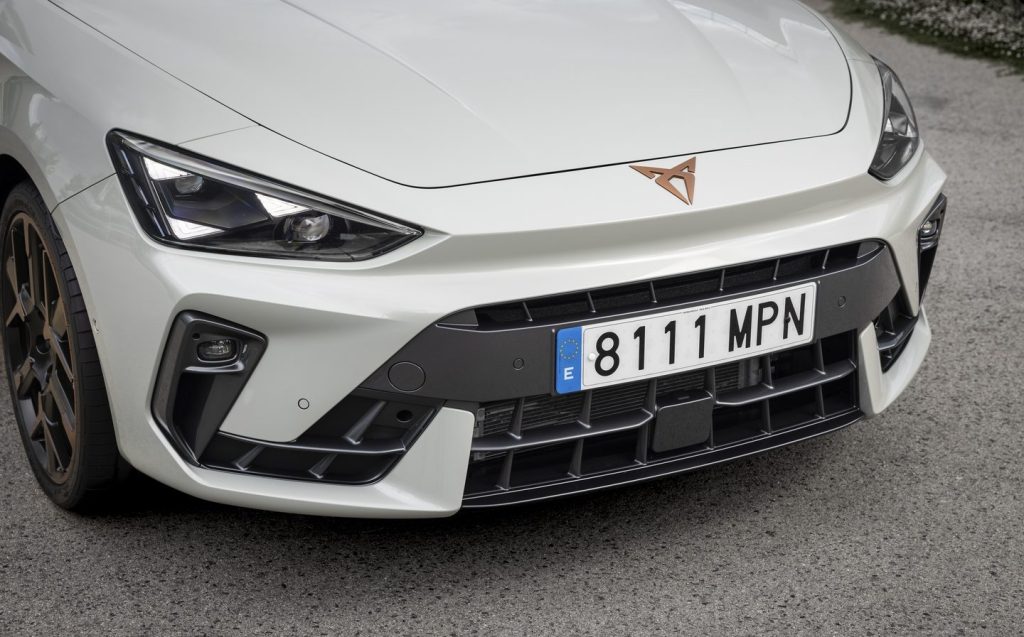
What was once a badge used for high-performance Seats is now a standalone carmaker, focusing on stylish and sporty cars, with a strong focus on electrification.
To that end, Cupra’s product line-up looks far more forward-thinking and interesting than Seat’s collection of elder machines; think of the Born electric hatch and the new Tavascan electric coupé-SUV.
It also has its own standalone model, the Formentor, which has never been sold with Seat badging during its lifecycle and has been a runaway success.
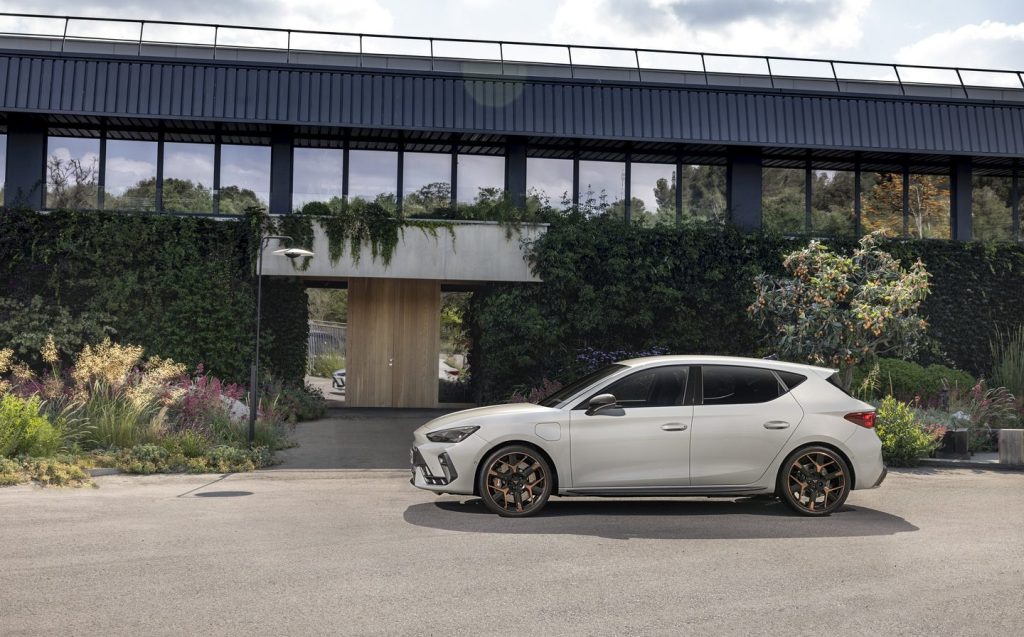
All of which brings us back to the Leon. It’s one of two Cupra products that started life as a Seat and was then reinvented by the younger marque, the other being the Ateca.
Yet, in a case of the tail wagging the dog — and in a move that probably won’t provide Seat fans with much comfort when it comes to determining which of the two Spanish brands is more important — it’s Cupra that gets to reveal its updated Leon first.
Weirdly, the current Leon feels old, despite the fact that it isn’t. It only launched in 2020, so it’s no older than the fancier Formentor, and is the fourth generation of a product line stretching back to 1999.
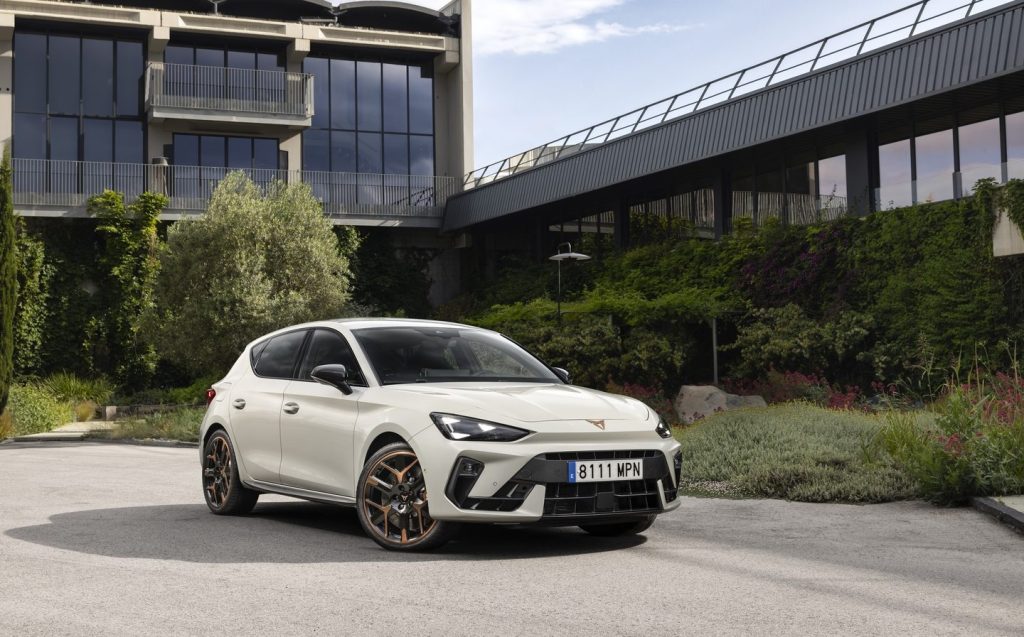
Maybe it’s the fact that Cupra has the advanced EVs such as the Born and Tavascan in its arsenal, or simply that we’re more familiar with the Leon name than we are with, say, Formentor, that makes this car feel a little dated.
Whatever; Cupra’s approach to the redesign is to give the Leon the same sort of beaky, smoothed-off face as the Born and Tavascan. It has done much the same thing to the Formentor at the same time, too.
What you think of the new Cupra Leon’s styling will be subjective. For what it’s worth, I’m not entirely convinced by the latest look.
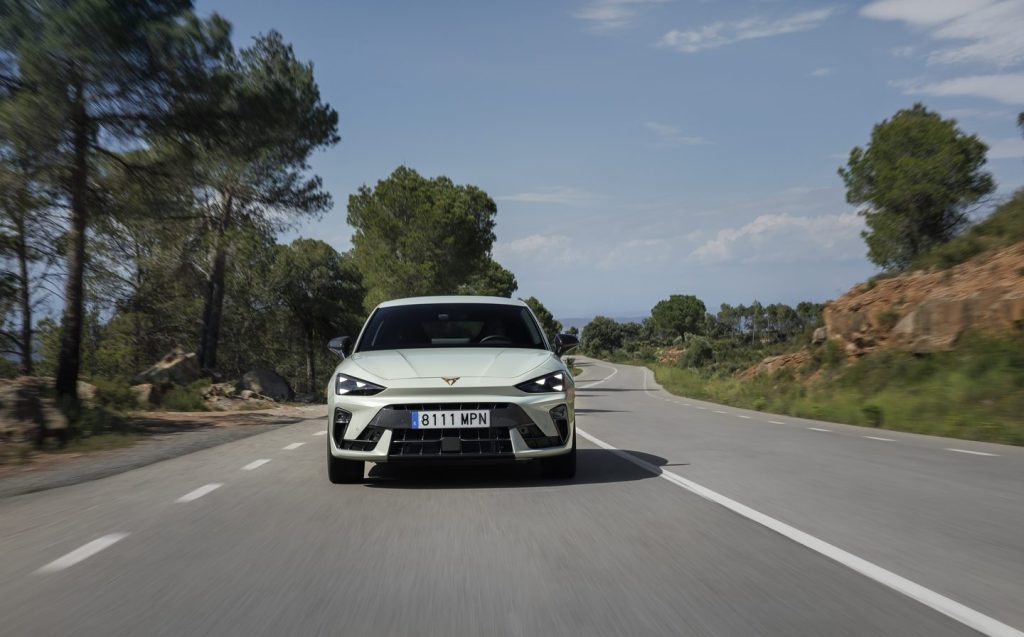
The key differences are the “triangles within triangles” headlights, made up of three LED signatures within each cluster, and then the almost total abandonment of a radiator grille.
It hasn’t gone, of course, because the Leon still requires cooling air to flow into the internal combustion engine nestled under the bonnet. That air enters through what would otherwise be the Leon’s front bumper, which leads to a featureless expanse between the headlights and, frankly, a less handsome appearance than the car it has replaced.
The other alterations to the Cupra Leon are less dramatic, with a handful of new body colours and alloy-wheel designs added to the portfolio.
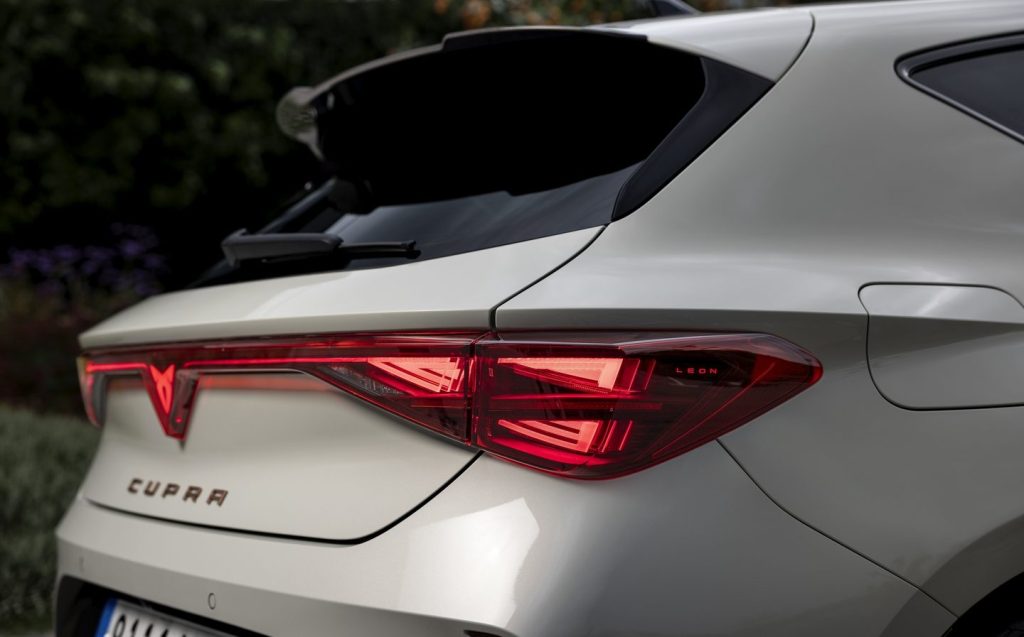
At the back, the triple-triangle light detail is repeated, while there’s also a full-width strip of illumination which includes a light-up Cupra logo badge — a new feature for the facelifted car.
That, though, has necessitated the relocation of the solenoid to open the boot on the hatchback. And good luck finding it if no one tells you where it has got to. There’s certainly a degree of embarrassment, shall we say, when you’re fumbling around trying to find a button.
For reference, it is all the way over on the right near the cluster, underneath the protruding ridge that the light strip sits in. Cupra hasn’t even bothered to make its surface feel different, so it really is a cack-handed bit of ergonomics if we’re honest.
Inside, like many products in the Volkswagen Group that have been refreshed lately, attention has centred on the previously maligned touchscreen infotainment and the old non-illuminated sliders for the volume and temperature controls.
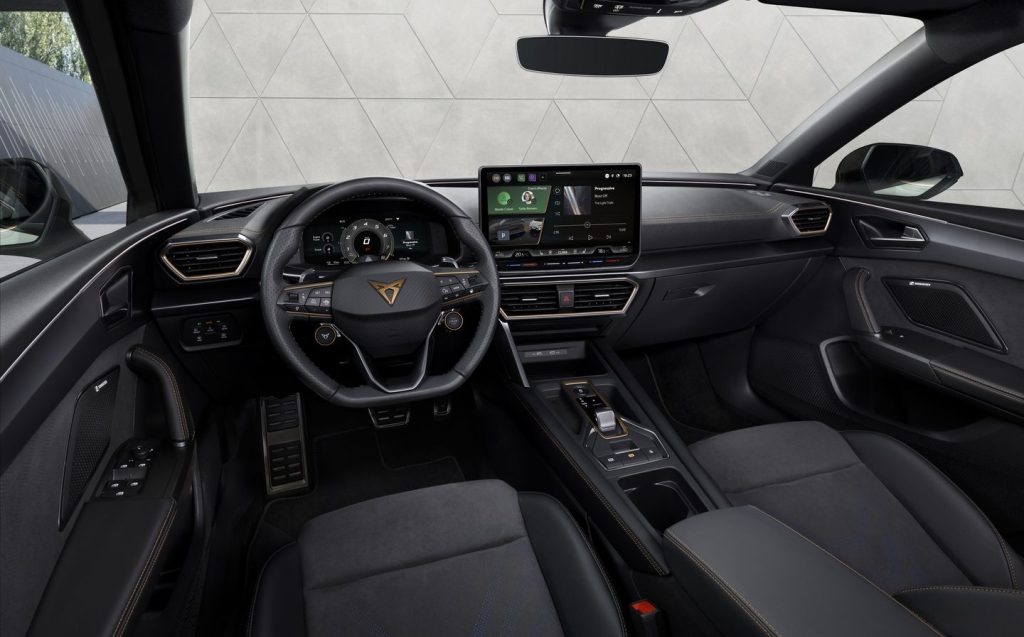
When it comes to the central display, it’s now a 12.9in item with sharper graphics and faster response times, and it works well in the main, although the climate controls are still housed in here rather than on separate physical switchgear.
The sliders also now do glow at night, so you’ve got a much better chance of finding them in the dark.
Otherwise, the Cupra’s interior is an attractive, well-built cabin dotted with the company’s signature colour of copper and generally exuding an air of supreme quality.
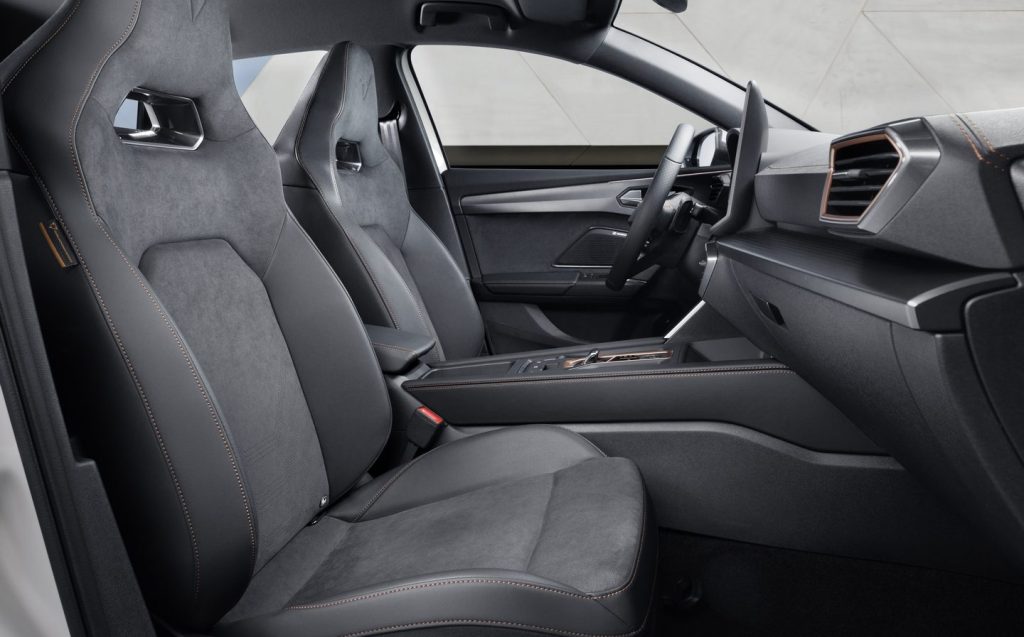
There’s plenty of space inside too, with enough room in the Leon hatchback for four adults to get comfortable, although a useful boot size of 380 litres on the pure-petrol models is trimmed to a rather more meagre 270 litres in the plug-in hybrids, due to the placement of their battery packs under the boot floor.
If you need more cargo capacity, then there’s always the Leon Sportstourer, which is Cupra-speak for an estate car. It holds 620 litres as a TSI petrol, or 470 litres as a plug-in hybrid.
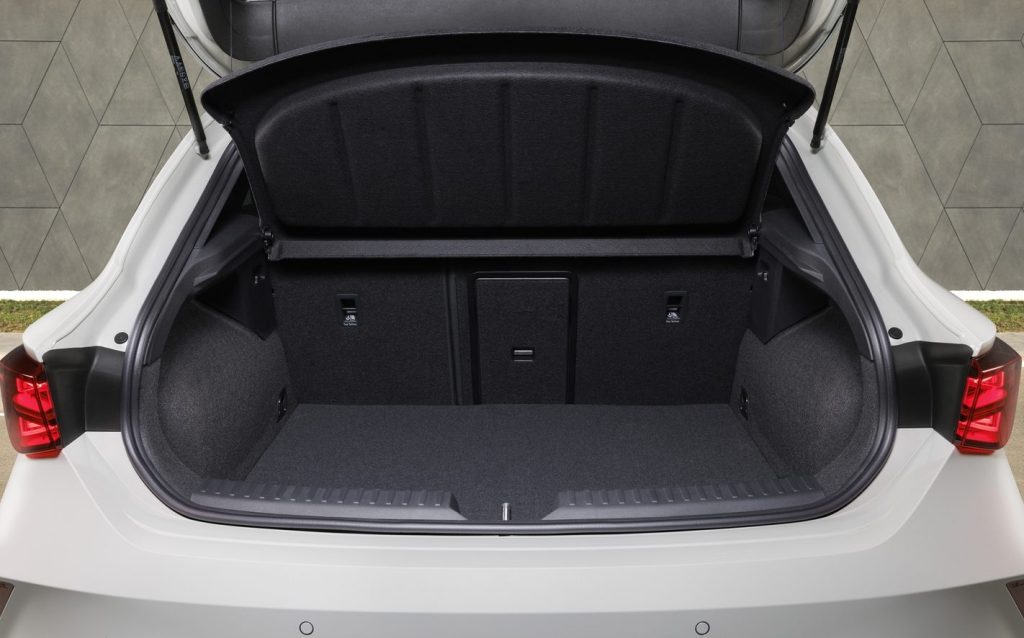
Talking of power sources, they continue largely as before. This means there’s an array of TSI-badged petrol models. The most potent Leon hatchback has up 296bhp and is front-wheel drive only, while the Sportstourer can be had with up to 320bhp and an all-wheel-drive system.
The most interesting models are the plug-in hybrids, though, which Cupra labels “eHybrid”. These have a new 1.5-litre petrol engine, instead of the old 1.4, linked to an electric motor, and the most powerful version now produces up to 268bhp.
It’s not so much the power hike which matters, mind, because the 272 eHybrid (that 272 refers to the peak power output in metric horsepower) is actually heavier than its predecessor and so marginally slower to 62mph.
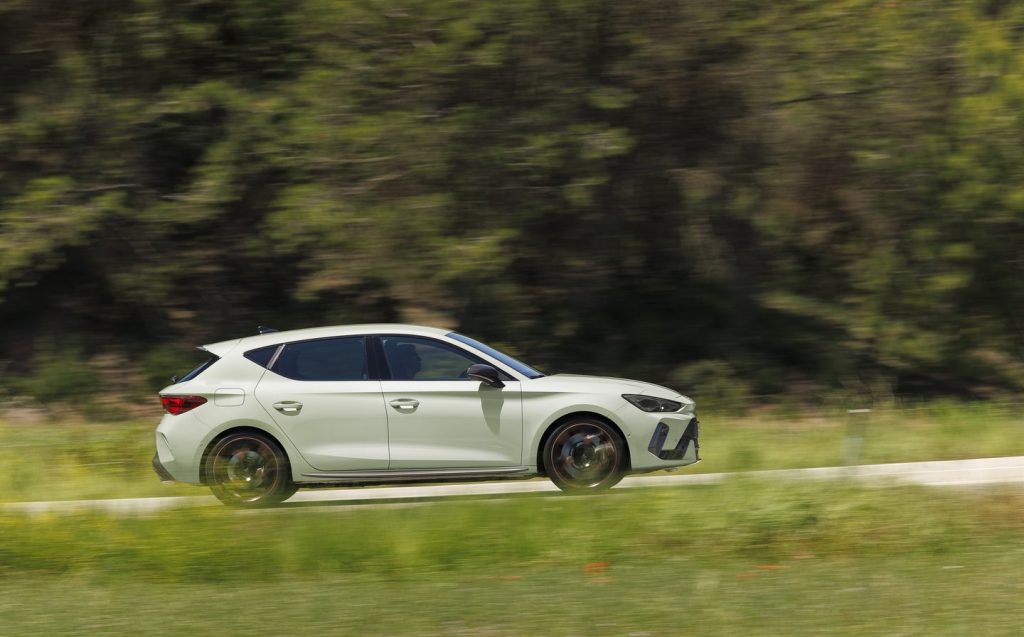
No, it’s the fact that all Cupra Leon eHybrids now have a much-enlarged battery pack, rising from 12.8kWh usable capacity to a much more substantial 19.7kWh now (which is where that weight gain has come from). That sees the electric-only range of the eHybrids increase to 74 miles, doubling the old 37-39-mile figure (but expect less in the ral world, especially on motorways or in cold weather.
Even better, the new Leon eHybrid models can now be recharged on a DC rapid public charger at up to 50kW, meaning the battery pack can be replenished from 10-80 per cent charge in only 26 minutes, which is a boon to which not all plug-in hybrids can lay claim.
It’ll take around two-and-a-half hours to go from 0-100 per cent on an 11kW AC connection, or in excess of three hours on the more typical 7.4kW home wallbox.
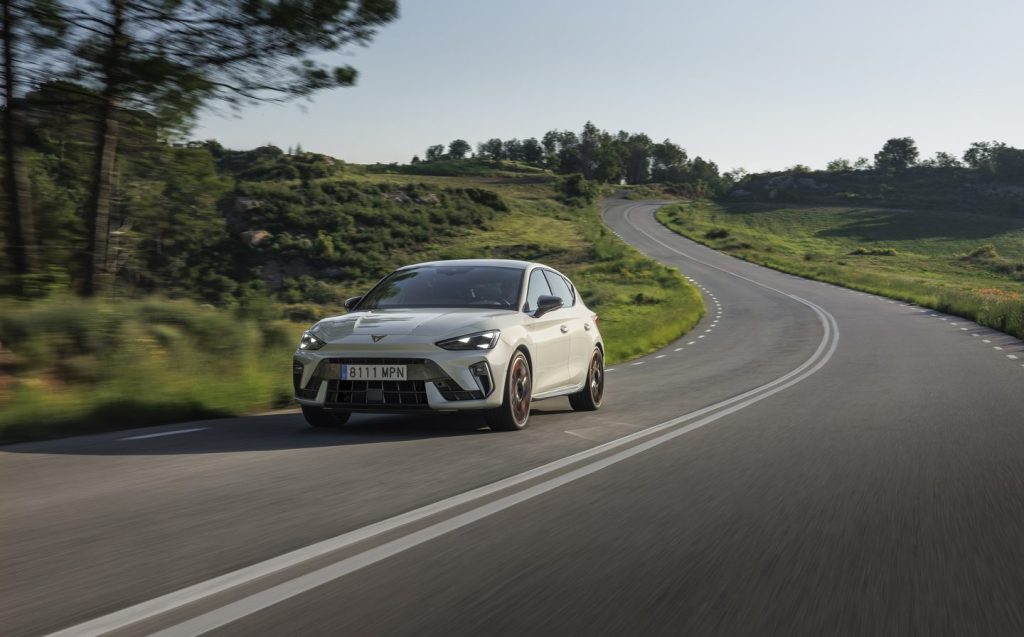
Naturally, with the weird way cars are tested for fuel efficiency skewing results wildly, the Leon 272 eHybrid has a farcical on-paper economy figure of more than 700mpg. That sort of return would need an almost fastidious devotion to daily charging and almost no use of the 1.5-litre petrol engine whatsoever, so it’s best to focus on the published “charge sustaining” figure of around 52mpg instead.
That looks far more believable, as during a mixed test route our car returned an indicated 74.3mpg and still had an indicated 37 miles of all-electric range remaining, which is impressive parsimony.
Also, the 9-10g/km CO2 figures bring significant tax breaks to owners, especially those wanting a Cupra Leon eHybrid as a company car.
To drive, it’s clear that the 296bhp 2-litre TSI model is the one for thrill-seekers, as it makes a more appealing noise and feels considerably quicker than the 268bhp eHybrid.
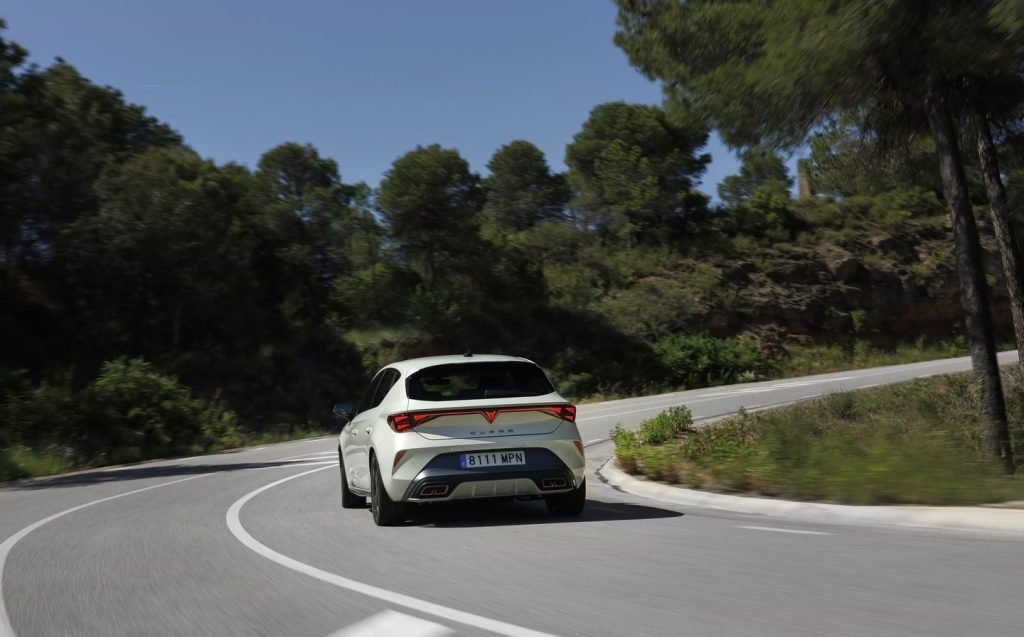
That said, the plug-in variant is in truth surprisingly well sorted, managing to feel agile and entertaining in the corners and masking its weight of 1.7 tonnes very well indeed.
There’s ample performance from the petrol-electric powertrain too, with generally nice noises from the combustion engine up front until you get to about 4,500rpm, whereupon it can sound a little strained.
However, specify it correctly and the eHybrid runs on smaller wheels than the top-dog TSI, which results in really lovely ride comfort and superb levels of rolling refinement. This serenity is only augmented by the regular occasions the Leon plug-in opts to run purely on its near-silent electric power alone.
So, there’s little doubt that Cupra has managed to improve the Leon in several key areas as part of this update, especially if you like the way the new car looks at the front end.
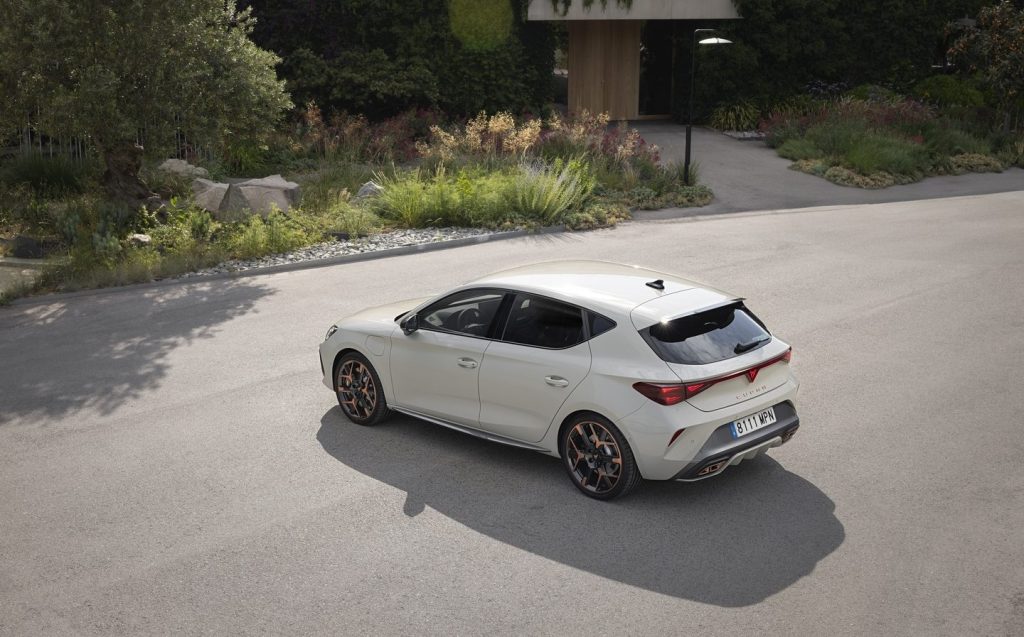
But, somewhat disconcertingly, for all the upgrades the Leon has had visited upon it, and for all Cupra’s attempts to make its take on this model different to the Seat on which it is based, it still feels like a car that is not quite fitting in with the rest of Cupra’s products.
Who knows? Maybe the Seat version will wow us a little more and also give some clarity on just which of these two Spanish brands is going to take precedence in the future.
Or maybe we’ll try that car and be convinced that Cupra’s long-term success will depend on the cars it has at its disposal that didn’t start life as Seats in the first place. On the basis of the worthy yet somewhat underwhelming Leon eHybrid, we’re sure this will turn out to be the case.
Related articles
- If you found our review of the updated Cupra Leon interesting, you might want to read about the other new Cupras coming down the line
- And make sure you read our review of the updated Cupra Formentor as well
- Or read our review of the new Cupra Tavascan
Latest articles
- F1 2025 calendar and race reports: The new Formula One season as it happens
- Seven great automotive events to visit this summer, from F1 to art and champagne
- Watch new Porsche 911 GT3 smash Nürburgring record for manual cars
- Skoda Elroq 2025 review: Czech carmaker can’t seem to miss with its electric family cars
- Five best electric cars to buy in 2025
- Should I buy a diesel car in 2025?
- Zeekr 7X AWD 2025 review: A fast, spacious and high tech premium SUV — but someone call the chassis chief
- Denza Z9GT 2025 review: Flawed but sleek 1,062bhp shooting brake from BYD’s luxury arm
- Extended test: 2024 Renault Scenic E-Tech review


